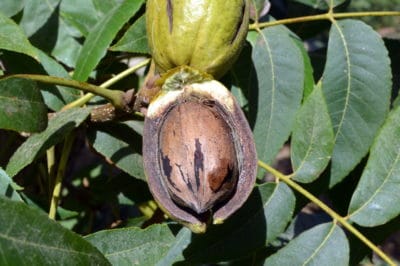Where Do Pecan Trees Grow Best?
Pecan trees (Carya illinoinensis) grow wild across a wide swath of the central and southern United States, from northern Illinois south to the Gulf Coast and from southwestern Ohio west to Texas’ Edwards Plateau. They thrive in the rich, deep soils of the Ohio, Illinois, Mississippi and Missouri river bottoms.
Commercial pecan growing operations spread across USDA plant hardiness zones 6 through 9. States with the 200-plus frost-free days pecans need between their spring bloom and fall harvest include:
- Alabama
- Arkansas
- Arizona
- California
- Florida
- Georgia
- Kansas
- Louisiana
- Missouri
- Mississippi
- North Carolina
- New Mexico
- South Carolina
- Texas
Five of these states – Georgia, New Mexico, Texas, Oklahoma and Arizona – account for nearly 40 percent of the world’s commercial pecan production.
Pecan Growers around the World
Pecan trees now find themselves growing many thousands of miles from their native North American forests. Mexico, Peru, Brazil, Israel, South Africa and Australia all grow them commercially. Australia, South Africa and Mexico in particular are regarded as the biggest competitors to America’s growers. Their production is expected to increase as Asia’s consumption of pecans rises.
Expert gardener’s tip: The pecan scab disease that affects so many American, Mexican and South African trees is non-existent in Australia. This allows Australian growers to produce pesticide-free harvests – a big advantage when competing for the organic market.
Growing Your Own Pecan Trees
Provided with the right site and growing conditions, pecan trees respond with rapid growth and the shortest time to harvest of all hickory family trees.
Room to Grow
For trees as large as these, space is a prime consideration. And most pecan cultivars require cross-pollination by a different cultivar to produce nuts. Unless you want to plant one strictly as an ornamental shade tree, you’ll need two.
Soil and Sun
Pecan trees perform best with moist, humus-rich well-drained soil and six or more hours of unfiltered daily sun. With the right conditions and a compatible cross-pollinator, a nursery-started tree yields its first harvest five to seven years after planting.
